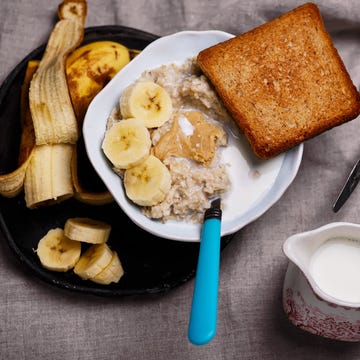A recent statistic from the British Dietetic Association showed that the average daily fibre intake of British adults is just 18g – well below the Recommended Dietary Allowance (RDA) of 30g. With research pointing to benefits that include protecting the heart, boosting the gut microbiome and reducing the risk of bowel cancer, it’s worth reflecting on this important component of your diet and the influence that it has on your health.
What is dietary fibre?
Dietary fibre belongs to the carbohydrate family and is a group of substances in plant foods that cannot be completely broken down by human digestive enzymes. It’s found in a variety of plant-based foods, including fruit, vegetables, whole grains, pulses, nuts and seeds.
The main role of dietary fibre is to support a healthy digestive system by creating bulk and helping the movement of stool through and out of the body. Staying hydrated and active can also help with this. Some components of dietary fibre are fermented in the large intestine by gut bacteria, producing short-chain fatty acids, which can help to support a healthy gut microbiome. Studies have shown that consuming a high-fibre diet can help to prevent conditions such as heart disease and type 2 diabetes, reduce the risk of bowel cancer and maintain a healthy weight. The British Nutrition Foundation advises that ‘a food is a ‘source of’ fibre if it has at least 3g fibre per 100g and ‘high in’ fibre if it has more than 6g per 100g’.
What everyone's reading
What is the gut microbiome?
The microbiome has a number of functions, synthesising some vitamins, short-chain fatty acids and neurotransmitters, all of which are needed for physical and mental health. But the biggest influence that it has is on our immune system, since 70% of it resides in the gut. Research is clear about one thing: the more enriched your microbial diversity is, the more likely that you are to have positive health.
A high-fibre diet, rich in colourful fruits, vegetables, legumes and whole grains, is central to increasing bacterial diversity in our gut. This can be further enhanced by consuming fermented foods, including yoghurt, sauerkraut, tempeh, kombucha and kefir.
What do runners need to know?
Runners still need to try to consume the RDA of 30g of fibre a day. However, overconsumption and timing are also important factors that you need to consider. Consuming high-fibre foods too close to a run may cause digestive distress, leading to the urge ‘to go’ while on a run. So, allowing high-fibre foods time to digest prior to running is advised – I suggest at least four hours. This is why it’s recommended that you reduce fibre intake a few days before a race.
Also, make sure that you don’t prioritise intake of high-fibre foods over necessary starchy carbohydrates such as rice and pasta, which provide fuel to the muscles when we run. A diet full of fibre is voluminous, which means that you get full quicker, leaving less space for the types of carbohydrates that provide energy.
How to boost your fibre intake
Here are some simple ways to increase your fibre intake without going overboard.
1. Go for wholegrain cereals or oats for breakfast.
2. Top your porridge with toasted seeds and nuts.
3. Make a homemade smoothie with frozen fruit and add a handful of oats.
4. Add pulses to soups.
5. Eat the skin on your potatoes.
6. Choose oatcakes or wholegrain crackers as snacks between meals.
7. If wholegrain rice or pasta is a struggle for you, try half white and half wholegrain options.
8. Snack on dried fruit or add it to cakes and flapjacks.
9. Aim to eat a colourful variety of fruit and vegetables throughout the day.
10. Don’t forget that frozen fruit and vegetables also count as a source of fibre.













